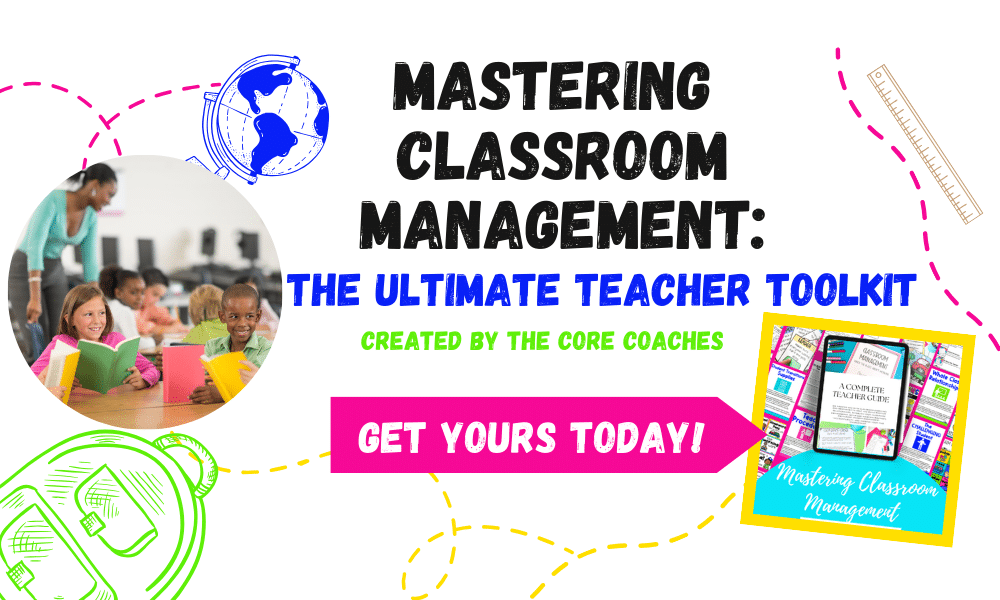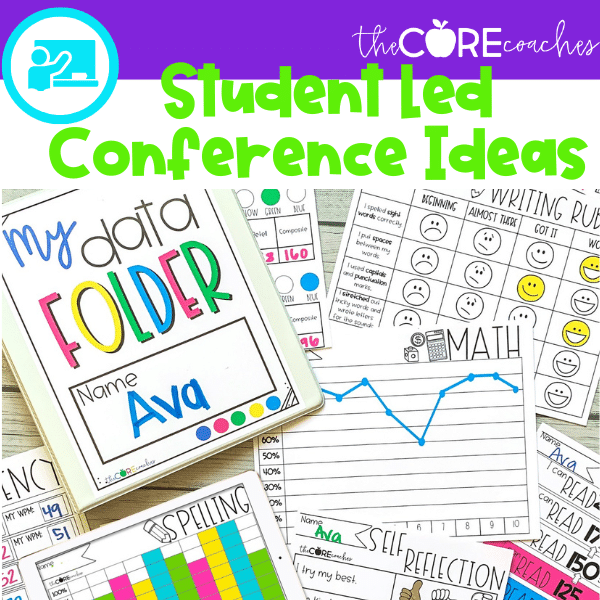Whether you have been teaching for twenty years or it’s your first time stepping into a classroom, there is one thing that all teachers can benefit from – effective classroom management. Therefore, having a toolkit of effective classroom management strategies is essential for any teacher.
While a toolkit of evidence based strategies is essential it can often feel overwhelming to know where to begin! That’s why we put together all of our best classroom management strategies to share with you.
How can you establish clear rules in the classroom?
Before we dive into the classroom management strategies let’s first answer one of the most commonly asked questions – how can you establish clear rules in the classroom?
Well, you might be surprised to hear us say that with effective classroom management tools – the rules are not needed. Yes, we know saying rules are not needed goes against everything you may have heard about classroom management, but let us explain.
Rules are the last resort, and often, they don’t even work. Why? Simply put, students follow rules when they feel invested in the outcome. Therefore, they need to first be emotionally connected to their learning.This includes feeling connected to their peers, teachers, and the learning environment itself.
That’s why before we even discuss rules as a form of classroom management we encourage teachers to focus on 6 other areas:
- Positive relationships
- An Inclusive Classroom Environment
- Routines and Procedures
- Student engagement
- Student accountability
- Time management
Come along with us as we explain why each of these focus areas are important for effective classroom management. Moreover, how focusing on these six areas makes the rules less important or when needed, more effective.
Effective Classroom Management Strategies
According to Edglossary, classroom management is defined as the wide variety of skills and techniques that teachers use to keep students organized, orderly, focused, attentive, on task, and academically productive during a class. As you explore the six areas that we suggest focusing on for classroom management, you will see that each of them supports at least one of these areas defined by Edglossary.
Classroom Management Strategy: Build Positive Relationships
One of the reasons that rules are often not effective is a result of the relationship between the person enforcing the rule and the person being told to follow the rule. Specifically, lack of a positive relationship between these two people.
This is why relationships are SO important in the classroom! Humans, including students, don’t like to listen to people we don’t feel a mutually positive relationship with. Therefore, before any rules can be effective there needs to be a positive relationship between teacher and student.
We know that as a teacher you already know how important relationships are. That’s why you probably begin every school year with getting to know you activities during back to school. However, what we want to emphasize is building positive relationships ALL YEAR LONG!
To help you get started, we have 5 strategies you can try today to begin building positive relationships inside your classroom:
Classroom Management Tip: Greet Your Students at the Door
Greeting students in the morning will set a positive tone each day. Help your students feel welcome and safe the moment they arrive!
Want a fun way to do this that keeps students engaged all year long? Try out our Morning Greeting that is included in our Mastering Classroom Management Toolkit.
Classroom Management Tip: Walk Around the Room While Students Work
Walking around the room while students are working provides you opportunities to have authentic conversations with individual students. This helps create personal connections that go beyond academics.
Classroom Management Tip: Learn one interest of each student
In addition to having time to speak with students, walking around the classroom supports you in getting to know what your students are interested in. We suggest making it a goal to learn about one unique interest that each student has.
Inside our Mastering Classroom Management Toolkit you can access a Conversation Checklist that will help you keep track of what you learn about each student and ensure you reach each student.
Classroom Management Tip: Use an Interest Inventory to Learn About Students
Beyond getting to know students personally it is equally important to understand their needs in teh classroom. This is why an interest inventory sheet can help you learn more about your students’ learning styles or preferences. In addition, if provides them a safe place to share any personal situations that may impact their learning.
We provide a ready to use Interest Inventory as part of our Mastering Classroom Management Toolkit.
Classroom Management Tip: Let Students Get to Know YOU!
Students enjoy learning about you as the teacher, so feel free to share little tid bits throughout the year to help them get to know you. For example, you can share something you enjoy doing on the weekend, talk about your pets, or share a favorite hobby.
Teacher student relationships are just one type of important relationship in the classroom. Beyond this, there are three other types of relationships: the whole class relationship, the student-student relationship, and the relationship with challenging students.
If you are looking for support on how to build these different types of relationships in your classroom, download our Mastering Classroom Management Ebook. In our Ebook we dive deeper into these relationships and how they affect classroom management. Moreover, we provide several ready to use resources to help you build these relationships in your classroom.
Classroom Management Strategy: Create an Inclusive Classroom Environment
The second area of focus for classroom management is creating an inclusive classroom. While
this builds on creating positive relationships, it goes beyond the relationships. Creating an inclusive classroom community is largely focused on how you create the actual physical environment.
The physical classroom includes many different elements. It relates to how the desks are set-up to what you have on the walls. One thing we always like to remind teachers of is that students spend a significant amount of time in the classroom. For some, they may feel like the classroom and school are a second home. Therefore, it is essential to have a classroom environment that feels like home to each student.
One of our favorite ways to do this, that is super easy, is to use student work to decorate the classroom! Yup, we even suggest waiting until the first day of school to start creating bulletin boards so that you can use student work.
In addition to this favorite strategy, we have included several more in our Mastering Classroom Management Toolkit. Here are a few of the strategies we share:
Classroom Management Tip: Plan Well Defined Learning Spaces.
There are several different types of instruction that take place in one classroom: whole group, small group, direct instruction. It’s important to have a well defined space with minimized distractions for all types of instruction.
Classroom Management Tip: Assess Transition Spaces
Help the flow of your classroom by assessing how students move throughout the room: Where do students line up? Is there enough space for students to walk between desks? What other areas of your room do transitions take place? What distractions or potential problems could occur in these transition spaces?
Classroom Management Tip: Create a Calm Down Corner
Having a classroom calm down corner can benefit everyone. It gives all students a safe space where they can manage their emotions in a positive way, which can support their behavior and engagement in class.
Classroom Management Strategy: Implement Routines and Procedures
As mentioned above, assessing how transitions are used in your classroom is one way to create a safe and inclusive physical classroom. Transitions are one example of our third focus area: routines and procedures.
Routines and procedures are the core of a well managed classroom because they create clear expectations for how to complete various tasks. Well established routines and procedures allow for effective movement throughout the day which helps eliminate extra time for students to get distracted and off task.
One of the most effective ways to use routines or procedures is for transitions. As mentioned above, transitions are often a physical movement in the classroom. However, it can also be as simple as a transition from one task to another while seated at a desk. Here are four times of day where a transition takes place and a routine could support classroom management:
- Entering the classroom
- Starting an activity
- Changing activities
- Exiting the classroom
To learn how to effectively create a transition routine, or ANY routine or procedure we suggest follow these 5 Steps:
- Describe
- Demonstrate
- Practice
- Refine
- Agreement
In our toolkit, we dive deeper into what to explain to your students during each of these steps. We also provide several ready to use resources to help you create and implement routines in your classroom.
Classroom Management Strategy: Enhance Student Engagement
Next to a discussion on effective classroom management, the topic of student engagement (or sometimes, lack thereof) is another popular topic. The interesting thing is that these two topics are intertwined.
Simply put, when students are engaged they are involved in learning and not causing distractions. Therefore, focusing on engagement strategies will help class run smoothly and eliminate the need for enforcing rules. Moreover, student engagement leads to more student learning!
Take a look at 3 of our favorite engagement strategies:
Classroom Management Tip: WhiteBoards
During a whole class lesson, give every student a whiteboard. When you ask a question, give them time to think about their answer and write their responses. Have students hold up their answers so you can see them.
Classroom Management Tip: Think-pair share
An important part to making think-pair share an effective opportunity to respond is giving students a clear structure for the protocol.
Classroom Management Tip: Accountable Talk
We like to use colored chips for accountable talk. Giving each student colored chips that must be used to contribute to the conversation (and MUST be used) encourages all students to participate and helps guide conversations in groups of 3-5.
These are just three of our favorite student engagement strategies. You can find more of our favorites in our classroom management toolkit.
Classroom Management Strategy: Engage Student Accountability
Earlier, we mentioned that students need to know the person who is assigning a rule in order for a rule to be effective. This is typically because the student values the relationship and respects the person enforming the rule. A similar relationship can be seen between students and their school work.
Students need to see the value in their learning. Therefore, it is important to involve students in their learning through accountability. If students are expected to be accountable in their learning they are more likely to participate and be engaged. All things that lead to less distractions and a well managed classroom.
Accountability does beyond academics though. Student accountability also relates to behavior. One way we have found success in creating student accountability ardound behavior is through a 5 step process. Below are the 5 steps we invite teachers to take when working with students to create accountability.
Classroom Management Tip: 5 Steps to Holding Students Accountable
- Recognize & Write: Teacher identifies behavior and student writes it down.
- Reflect : Student reflects on the behavior
- Report : Student reports to adult
- gRowth: Have students make a plan w/ the person they report to and then share with the teacher.
- Revisit: As the teacher, set a date to revisit this behavior with the student. If the student has made progress, consider rewarding them by using the same system to recognize positive behavior and have them report it to their parents.
Want more ideas on how to create student accountability? Check out the ready to use resources in our Mastering Classroom Management Toolkit!
Classroom Management Strategy: Time management
This next focus area is one that relates to our behavior as teachers, rather than the behavior of our students. Time management.
We are all different when it comes to time management. Some of us are the copy person that makes copies the day of the lesson, and some of us are the copy person that makes them a week ahead.
While one is not better than the other, one might impact how your classroom runs more smoothly. So, we always like to ask teachers, “What type of copy person are you?”
Your answer to this question is an invitation to start reflecting on how time management may play a role in your classroom management. More importantly, it may provide you with some direction on how to make your classroom management more effective.
Whether you are a make copies the day of or the week ahead kind of person, we think that all teachers can benefit from reflecting on time management and how it impacts classroom management. Therefore, we spend an entire section focusing on this topic in our classroom management ebook.
Here are a few of the things we discuss related to time management and suggestions we provided on how to implement these strategies in your own classroom.
Classroom Management Tip: Have a Plan to Plan:
Create purposeful planning time for your week. For example, on Monday you ALWAYS plan for math, Tuesday is for Reading, Wednesday is for Science, etc. In your calendar or lesson book, make a plan that works for you and commit to sticking with it.
Classroom Management Tip: Batch your Teaching Tasks:
It can be easy to lose focus when you are trying to do too many things at one time. Set aside a time frame to prioritize certain tasks that you have put into “batches.” For example, put your emails into a “batch” and set aside the first 15 minutes of your school day before students arrive to read and respond.
Classroom Management Tip: Less than 2 Minute Rule:
Don’t put off what you can do now. If there is something that needs to be done, and it takes less than 2 minutes- do it right away! This will help you get things done more quickly and efficiently and also not have a nagging feeling that something still needs to be done.
In addition to these topics of discussion, we also provide suggestions on how to prioritize teaching tasks and how setting a timer during meetings can help keep things moving forward. And, those are just the things discussed related to time management for planning and preparation!
Beyond planning and preparation, we discuss how to set boundaries (especially for work and life balance) and how to keep class moving by using things like a timer and routines! In this last section it makes it clear that one of the reasons time management is so essential to effective classroom management is because time management IS classroom management!
Online Classroom Management Course
When we started this dive into classroom management strategies we said that if you have the right toolkit, you don’t need the rules. Now, this doesn’t mean we think you should completely toss the rules out. Classroom rules provide an overview of the expectations of the classroom which is a helpful piece for effective classroom management. However, hopefully you can see that by focusing on other areas the rules become a less integral part of your classroom management system.
We know this a new way to look at classroom management for elementary school teachers though. This is why we created an inexpensive classroom management course that you can access online!
This course is in the form of an Ebook combined with a toolkit. Therefore, providing you with easy access to explore classroom management in your own time while also having immediate access to tips and tools you can use in the classroom TODAY!
With the Mastering Classroom Management: Teacher Toolkit, you will receive resources for building positive relationships with your students and fostering a supportive and inclusive classroom environment. You’ll find techniques to establish and maintain routines and procedures that help your classroom run smoothly. Additionally, the kit provides valuable resources to enhance student engagement and accountability, ensuring that every student is actively involved in the learning process. And let’s not forget about time management—this kit will equip you with practical tips to make the most of your valuable instructional and planning time.
This toolkit is a complete resource to help you access all of the knowledge and resources needed to have the most effective classroom management this year, and in years to come!






